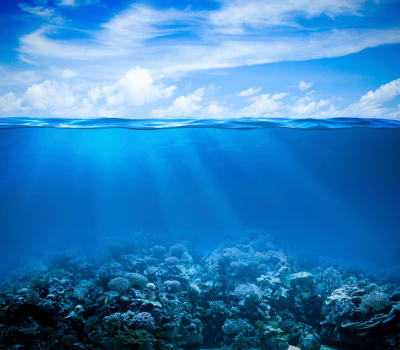Using AI to control energy for indoor agriculture
30 September 2024
Published online 26 September 2016
Study reports on distinctive microbial communities thriving deep within the central rift of the Red Sea.

© Getty Images/iStockphoto/Thinkstock
A remarkable decrease in virus-to-bacteria ratio has taken place, according to the study by researchers from Egypt and Germany, which reports on the biochemical and genetic individuality of microbes in the deepest brine pool sediments of the Red Sea’s central rift.
A brine pool is a large volume of highly saline water within an ocean or a sea. The high salt content of the pool makes its water much denser than the surrounding seawater, giving it a distinct shoreline and surface, akin to a lake within the sea.
The vast majority of these pools have a toxic concentration of metals, low oxygen levels, and very scarce light. These harsh conditions resemble early Earth and studying these extreme submarine ecosystems can provide valuable insights into the evolution of life.
"The skew in viruses-to-bacteria ratio shows a precise evolutionary mechanism."
In the sediment samples, the scientists found a marked increase in bacteria and mobile genetic elements, contrary to viruses, which were not abundant or diverse.
Mobile genetic elements (MGE) are segments of DNA capable of moving between different genomes. Although MGE are not the only factor of evolution, their ability to modify gene structure and alter general genome architecture makes them an accelerator in main evolutionary events.
“Our study links microbial community composition with selected genome structures-mobile genetic elements. MGE are known to execute genetics transfer and aid in the evolution mechanism,” says Rania Siam, corresponding author of this study, and professor of Microbiology at the American University in Cairo. The researcher believes that this notably higher content of bacteria and MGE, as well as the decrease in viral content, have mediated microbial survival in this extreme environment.
“The skew in viruses-to-bacteria ratio and viruses-to-mobile genetic elements ratio shows a precise and well-orchestrated evolutionary mechanism,” says Siam.
“The work points to the interesting roles of viruses in shaping the bacterial population,” adds Guilherme Oliveira, senior researcher of biodiversity and biotechnology at Vale Institute of Technology, Brazil, who is not involved in this study.
The processes behind microbial evolution, are so complex, however, Oliveira says understanding of survival of organisms in extreme conditions is far from complete.
Siam’s team intends to continue their work on microbes in extreme environments. “These organisms have evolved unique genomic contents that we can utilize in the discovery of novel antimicrobial drugs and anticancer peptides,” he says.
doi:10.1038/nmiddleeast.2016.141
Stay connected: